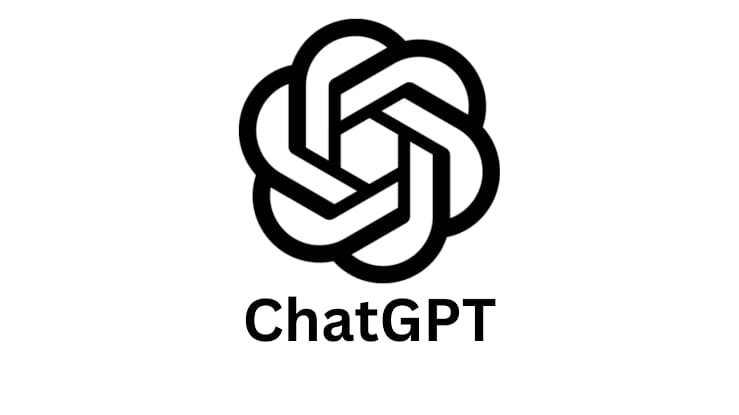Master Prompt Engineering: 10 Expert Tips to Get Next-Level AI Results
Hey friends, are you ready to get next-level results from AI tools like ChatGPT, Claude, and Gemini? Then you have come to the right place!
I am Ghulam Muhiudeen, and while working daily with AI tools along with blogging for the last 5 years, I have learned the perfect methods that make normal prompts extremely powerful.
Today, I am going to share with you 10 expert tips that will make you a master of prompt engineering. This is not any theory bhai, these are real-life tricks that I use every day – to create content, to solve problems, and to boost my productivity.
So let’s get started.
What is Prompt Engineering?
Understand AI prompt engineering like talking to a genius friend who knows everything but needs clear instructions to explain the work. Like explaining the work to a new team member – the more clear and specific you are, the better the output will be.
Prompt engineering is basically an art in which you give such instructions to AI that it does exactly what you want. In a way, it is a translation work between human thoughts and AI understanding – and if you become an expert in this, then getting AI to do the work for you will become a child’s play.
Why Bother with Prompt Engineering? The 200% Difference
Now think, most people use AI just like a simple search engine. They just write “write about marketing” and then get confused why the result is boring.
But when you understand prompt engineering, then you don’t just use AI – you guide it, like a conductor controls the whole orchestra. The difference between a good prompt and a great prompt can sometimes be up to 200% better results. And this is not just my personal experience, but research also says the same.
You can send the next part when it is ready, I will keep translating in the same style.
10 Expert Prompt Engineering Tips I Use Daily
Let’s now talk about those 10 expert tips that will change your entire AI experience. I use these tips myself everyday, and they are quite useful if you want to get the best out of AI.
1. Be Clear and Straightforward (The 5 W’s)
If you just write “write about marketing,” the result will be boring and general anyway.
But if you write clearly, like “write a LinkedIn post of 300 words about AI-powered content marketing trends 2024, and target CMOs who want to increase engagement by 50%,” the result will also be absolutely solid. Keep in mind the 5 W’s: Who, What, When, Where, and Why. The more details you give, the better the output.
2. Assign a Role: Talk to an Expert, Not a Machine
Don’t just talk to ChatGPT, but think as if you are talking to an expert.
For example, say “Act as a senior data scientist who has 10 years of experience in machine learning. Now explain to business people in simple language what neural networks are and how ROI is affected.” When you assign roles, the response of AI also comes like an expert – there is a difference between consulting an expert and talking to a generalist.
3. Structure Your Prompts Well
Break big instructions into small parts. Like follow a format:
- Task: What is the main goal? (e.g., creating a social media strategy)
- Context: What is the background info? (e.g., for a small eco-friendly clothing brand)
- Format: How do you want the output? (e.g., action items with bullet points)
- Constraints: What are the limits? (e.g., monthly budget of $500 and maximum 3 platforms)
4. Set Clear Constraints
If you don’t set limits then AI goes anywhere. For example:
- “explain in 3 bullet points, each one should be less than 15 words”
- “the tone should be conversational and encouraging”
- “this is for beginners”
- “explain in a numbered list”
A real example: “explain blockchain technology in 200 words, explain it in a way a 12-year-old child would understand, without using technical terms.”
5. Iterate and Refine
The first result will not be perfect, and this is normal. First give a basic prompt, then check the result. See what is missing, then give feedback like:
- “make it more engaging, add a personal story”
- “make the language a little more simple for beginners”
- “add more actionable steps”
- “add tech industry-specific examples”
6. Use Few-Shot Prompting (Show, Don’t Just Tell)
This means that you first explain to the AI what type of content you need by showing examples.
Like, “Write tweets like these: Example 1 – AI is changing the game! How small businesses are saving 10 hours by automating customer service with ChatGPT. Example 2 – 5 ChatGPT hacks you NEED to try…” Then say, “now write a tweet on the benefits of prompt engineering.” When the AI gets examples, it creates content in the same pattern as you expect.
7. Use Chain-of-Thought Prompting
Meaning, tell the AI to think step by step. Like “Let’s think step by step. How would a small business owner create a content calendar for social media?”
Then the AI will tell:
- Step 1: audience research
- Step 2: content themes
- Step 3: scheduling tools
This increases the accuracy of the AI on complex topics by 40-50%.
8. Use Negative Instructions (Tell AI What NOT to Do)
Meaning, tell the AI what not to do.
- “explain quantum computing without math formulas”
- “write a blog on productivity but don’t use clichés like ‘time is money’”
- “create a marketing plan but don’t mention social media advertising”
A real example: “write a professional email to a client about a project delay, but don’t give excuses, don’t use corporate jargon, and don’t make them feel too sorry.”
9. Control Creativity with Temperature Settings
Many AI tools have temperature settings.
- Low (0.1-0.3): produces fact-based content (use for technical docs and data).
- Medium (0.4-0.7): produces balanced content (use for blogs and marketing).
- High (0.8-1.0): produces creative and slightly unpredictable content (use for creative writing).
10. Test, Optimize, and Create a Prompt Diary
Save the prompts that work. Note what works best for different tasks, do A/B testing, and then improve based on the results. Create a personal prompt diary where you write down which prompt gave the best output – this will become your own prompt goldmine.
Real-Life Examples: From Average to Awesome Results
Let’s talk about some real examples which I have experienced myself.
Example 1: Content Creation
- My Simple Prompt: “write a blog post on AI”
- The Result: An average, generic article.
- My Refined Prompt: “Act as a digital marketing expert. Write a 1,500-word blog post titled ‘How Small Businesses Can Use AI to Increase Revenue by 30%’. The audience is such entrepreneurs who don’t have much idea about tech. It should have 3 case studies, 5 actionable tips, and a step-by-step implementation guide. It should be conversational and include personal stories as well.”
- The New Result: The content was so engaging that my clients actually followed it and implemented the AI solutions — 3x more engaging than before!
Example 2: Problem-Solving
- My Simple Prompt: “Help me with my website”
- The Result: Pretty general advice.
- My Refined Prompt: “Act as a UX designer with e-commerce experience. My online store’s cart abandonment rate is 60%. Analyze the checkout process and make 5 specific improvements that I can implement this week without coding. Focus on psychological triggers that reduce friction.”
- The New Result: When I applied these suggestions, cart abandonment decreased by 25% in just two weeks!
Common Prompting Mistakes to Avoid
Now let’s talk about some common mistakes.
- Being too vague. For example, just writing “Make it better” is too unclear. Better: “Improve the opening paragraph by adding an interesting statistic and a personal story that will immediately catch the reader’s attention.”
- Overcomplicating. Don’t stuff 10 things into a single prompt. Break up complex tasks into separate focused prompts. Go step by step.
- Ignoring context. If you just write “Write an email,” the AI will get confused. Better: “Write a follow-up email to clients who attended our webinar yesterday and still haven’t responded.”
- Not iterating. Don’t see the first result, say “this isn’t working,” and give up. A better approach is to say “this is fine, but make it a little more actionable and add some specific examples.”
Level Up: Advanced Prompt Engineering Techniques
Now let’s talk about some advanced techniques that a little more powerful people use.
- Prompt Chaining: Break a big task into multiple prompts. First, get the prompt researched and outlined, secondly, first draft, thirdly, edit, and fourthly, SEO optimization.
- Context Stacking: Slowly give context to AI. First assign a role, then state a specific objective, then write constraints and format, then give examples, and finally demand a structure for a specific output.
- Meta-Prompting: Take help from AI to create better prompts. Like, write “Act as a prompt engineering expert. Help me create a better prompt that achieves my specific goal. My current prompt is: [prompt]. How can I improve it?”
Helpful Tools and Resources for Prompt Engineers
There are also some useful tools that will help you.
- AI Models: ChatGPT (best for general tasks), Claude (strong for reasoning), and Gemini (helpful for research and fact-checking).
- Prompt Libraries: Very useful for saving and organizing your best prompts.
- Free Resources: OpenAI’s prompt engineering guide, AI community forums, Discord servers, YouTube tutorials, and prompt sharing platforms where one can get inspiration.
The Future is Now: Why Prompt Engineering is a Skill for Tomorrow
Prompt engineering is going to become even more important in the future. People who are now mastering this skill will have an edge in tomorrow’s AI world.
There are some trends to watch out for:
- Role-based prompting is getting smarter.
- Integration of external tools is coming.
- Prompt optimization is getting automated.
- Custom prompt templates are being created for every industry.
Your Next Steps to Becoming a Prompting Pro
Now the next step is simple.
- Pick one tip from this guide today and try it in your next AI prompt.
- Practice daily. Take out 10 minutes every day to experiment with new prompting techniques.
- Take notes. Make a note of what works each time. Create a prompt diary.
- Stay connected with the AI community to learn new ideas and tips.
Final Thoughts: Your AI Adventure Starts Now
Look friends, prompt engineering is not a technique to be memorized. It is a skill – a way of conversation – that will make your work easy for years.
Every expert was a beginner once, and every master made mistakes in the beginning (I still laugh remembering many of my own useless prompts 😅).
The most important thing is to start trying from today. Use these techniques, make mistakes, learn from them, and slowly build your style and skill. Soon you will start writing prompts whose result will be so perfect that people will think you took help from an expert!
Your AI adventure starts with your next prompt — make it worth it. Start with Tip #1 and see how a small change can lead to an awesome result. Remember, the best prompt engineers are not born — they are made from practice, mistakes, and learning.
What will your first prompt be? Let me know in the comments — I want to hear your AI success stories!
Keep trying, keep learning, and most importantly — keep prompting like a pro!
– Ghulam Muhiudeen
Founder, Pro Blogging Skills





